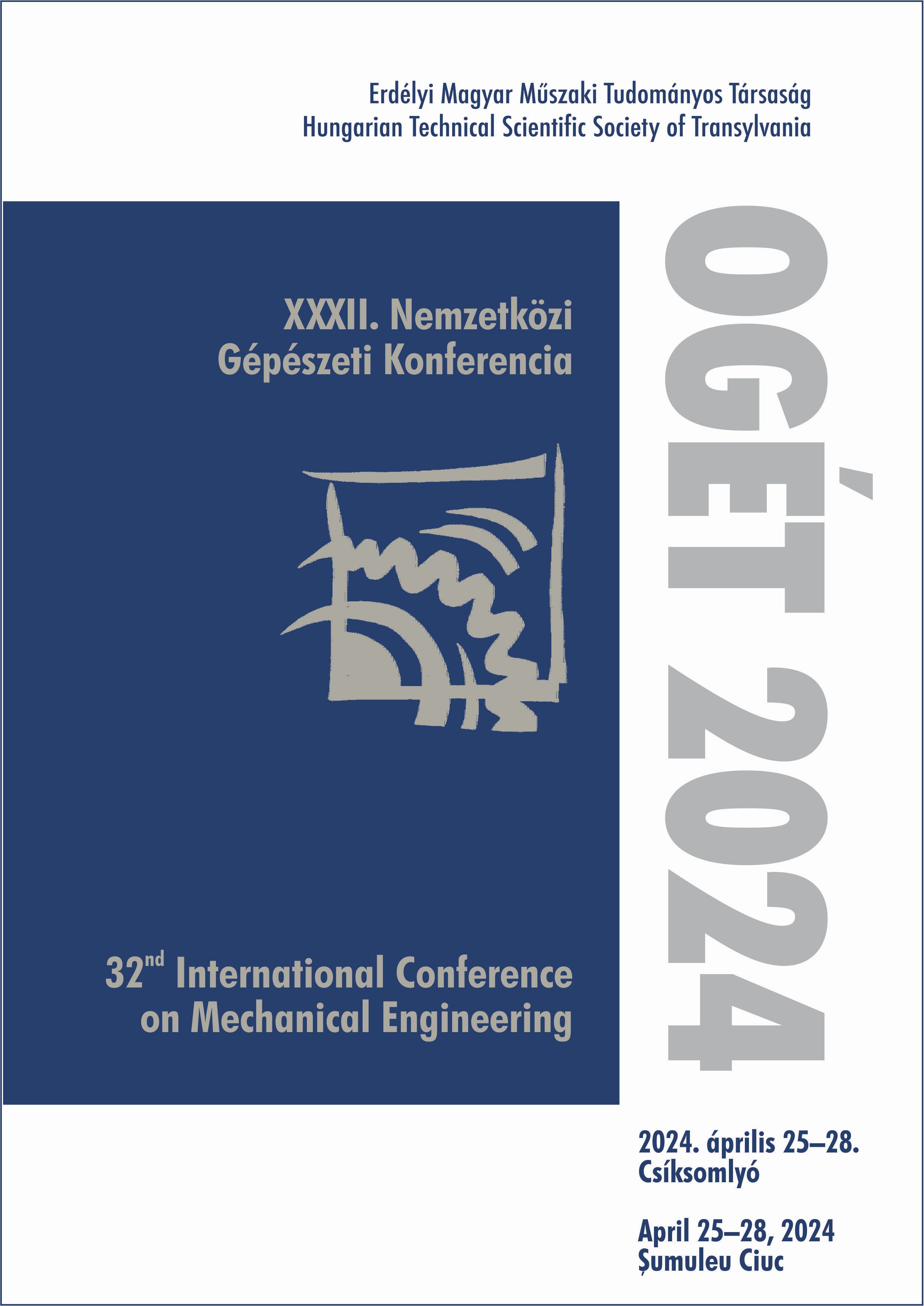Szimuláció alapú stabilitásvizsgálat állapotfüggő időkésésű modellekben
Simulation based stability analysis in state-dependent delay
Keywords:
semi-discretisation, implicit subspace iteration, state-dependent delay, turning, /, szemi-diszkretizáció, implicit altér iteráció, állapotfüggő időkésés, esztergálásAbstract
A well-known technique to calculate stability diagrams of delayed differential equations is the semi-discretisation method. It approximates the monodromy operator and its eigenvalues through linear mapping. Although it is a powerful technique it may be computationally expensive, and the implementation of the linear mapping makes it somewhat cumbersome. The implicit subspace iteration is based on the aforementioned principle, but instead of a linear mapping, it relies only on numerical simulation. Integrating the history function up to the dominant time period and then via pseudo inverse calculation arbitrary many of the dominant eigenvalues can be calculated iteratively. Its advantage is that any numerical solver can be used, and it is applicable to many difficult problems such neutral, or stiff systems, if we can numerically simulate them. In this work, we present the improved implicit subspace iteration method to be able to handle state-dependent delayed systems. We compare the results of iteration to the analytical solution in a case study of turning operation.
Kivonat
A szemi-diszkreticázió egy közismert módszer időkésleltetett rendszerek stabilitási diagramjainak számítására. A módszer a monodrómia mátrixot és annak sajátértékeit közelíti egy lineáris leképezés által. A hátrányai a számításigénye és a leképezés implementálásának összetettsége. Az implicit altér iterációs módszer a fenti elven alapul, de a lineáris leképezés helyett numerikus szimulációt alkalmaz. Ennek segítségével a kezdeti függvényt integráljuk az időben a fő időperiódusig, majd az úgynevezett pszeudo-inverz számítással iteratív módon tetszőleges számú domináns sajátértéket számíthatunk. Előnye, hogy bármely numerikus megoldó használható és olyan összetett problémákra is alkalmazható, mint a neutrális vagy merev rendszerek, elég, ha megfelelő numerikus megoldó a rendelkezésünkre áll. Jelen munkában, bemutatjuk az implicit altér iteráció továbbfejlesztett változatát, amely az állapotfüggő időkésésű rendszerekre stabilitásának meghatározására is alkalmazható. A numerikus módszert és az analitikus megoldást egy esettanulmány során egy esztergálási modellben hasonlítjuk össze.
References
Insperger, T., Stépán, G., Semi-discretization for time-delay systems: stability and engineering applications, Vol. 178, Springer Science & Business Media, 2011.
Zatarain, M., Alvarez, J., Bediaga, I., Munoa, J., Dombovari, Z., Implicit subspace iteration as an efficient method to compute milling stability lobe diagrams, The International Journal of Advanced Manufacturing Technology 77, 2015, 597–607.
Toth, M., Bachrathy, D., Stepan, G., Effect of wavy tool path on the stability properties of milling by the implicit subspace iteration method, The International Journal of Advanced Manufacturing Technology 91, 2017, 1781–1789
Bachrathy, D., Stépán, G. Bisection method in higher dimensions and the efficiency number. Periodica Polytechnica Mechanical Engineering, 56(2), 2012, 81-86
Insperger, T., Stépán, G., Turi, J., State-dependent delay in regenerative turning processes, Nonlinear Dynamics 47, 2007, 275–283.


